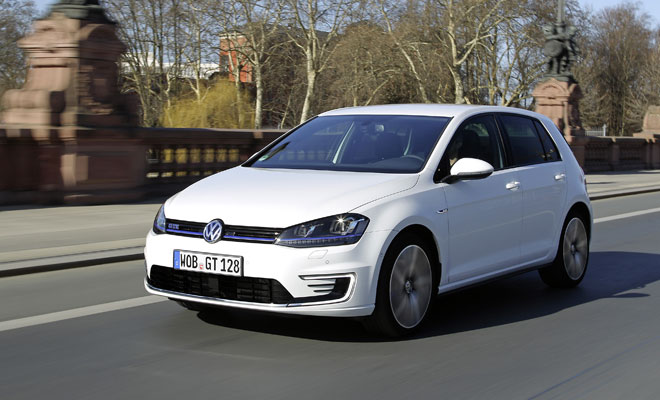by Lem Bingley 
The upcoming new Volkswagen Passat, due to arrive in the UK early in 2015, will include a plug-in hybrid model.
The petrol-electric Passat will combine a 154bhp (115kW) 1.4-litre TSI engine with an 80kW electric motor. When working together, engine and motor will provide peak power output of 155kW (208bhp), which ought to be sufficient to provide the plug-in Passat with an impressive turn of speed, or indeed load-hauling capacity in its practical estate-car guise.

The overall total adds up to VW’s most powerful hybrid, with both the engine and motor trumping the items due to appear in the upcoming Golf GTE. The gap isn’t big, however, with the plug-in Golf rated just 7bhp lower at 201bhp overall, due to marginally less power from both petrol and electric sources.
The GTE’s resources won’t fall far short of the 217bhp produced by the current Golf GTI, however, while beating the 181bhp of the GTD. In terms of the torque needed for eager acceleration, the GTE will offer 350Nm, a little below the 380Nm of the GTD but equalling the GTI’s grunt. Landing in this ballpark, the hybrid Passat is unlikely to hang around.

Both Golf and Passat plug-ins are expected to provide 50km (31 miles) of purely electric motoring. This figure, plus the similarities in other stats, reveal that Golf and Passat plug-ins will share mildly tweaked versions of the same basic innards. That’s entirely to be expected given that Golf and Passat utilise a variety of other common components, being built on the same modular Volkswagen platform that also underpins the current Audi A3, Seat Leon and Skoda Octavia.
The upcoming e-tron version of the A3 Sportback is another plug-in car that will employ the same battery, four-cylinder engine and electric motor as the Golf GTE, providing identical power output and performance to the plug-in Golf.

Both A3 e-tron and Golf GTE will be able to sustain speeds of up to 81mph on electric motor alone, while engine and motor together will whip either car to 62mph in 7.6 seconds and on to a top speed of 138mph. Both are expected to earn ratings of 188mpg and 35g/km when they go on sale – GTE orders open in August for delivery before the end of the year and the e-tron will not arrive far behind.
Passat and A3 will no doubt also share the GTE’s 120kg, 8.8 kWh lithium-ion battery, mounted under the rear seats. It can be charged in around three and a half hours from an ordinary mains socket, or in two and a half hours from a domestic wallbox. The charging socket in both Golf and A3 is hidden behind the radiator badge, on the nose of the car.

All these plug-in cars are pure front-wheel-drive vehicles, with the 34kg electric motor squeezed between the engine and gearbox, in a tightly packed engine bay that also houses the power electronics needed to control the flow of electricity between battery and motor. The gearbox, likely to be shared across A3, Golf and Passat, is a six-speed dual-clutch automatic.
Prices for the Golf GTE and plug-in Passat remain to be revealed, but the A3 e-tron will cost from £29,950 when it goes on sale, after the £5,000 contribution from the Plug-in Car Grant.
By way of contrast, a BMW i3 with range extender starts at £28,830, a Vauxhall’s Ampera is priced from £28,750, and a Toyota Prius Plug-in costs from £28,395, after the grant.

New Passat to join VW’s plug-in party
7 July 2014
Read more about: Audi plug-in cars Volkswagen



